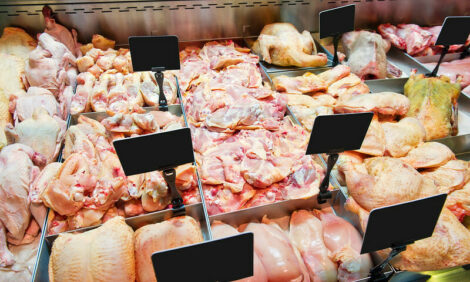



Pork Commentary: The US breeding herd is up 70,000 from a year ago
US - This weeks North American Pork Commentary from Jim Long.USDA December Hogs and Pigs Report (thousand head)

Breeding Herd
The U.S. breeding herd is up 70,000 from a year ago (1%). One positive, it only grew 13,000 in the last quarter, Sept – Dec. We expect no growth in the next quarter and probable contraction. Liquidation has begun and new projects are slowing down. The net effect is that there will be fewer pigs. When Canada releases its quarterly inventory, we expect the Canada-US combined breeding herd will be down for the 4th quarter.
Market
What can you say to 2.5 million more market hogs? That will work out to 100,000 more hogs a week, year over year, for the next 6 months. Packers will stay busy. The circovirus vaccine is working at keeping hogs alive. The state market hog inventory, year over year, shows where the hogs are being placed (states gaining 100,000-head plus).
December Market Hogs 2006 to 2007
Year over Year
(thousand head)

About 75% of the market hog inventory growth is in the Corn Belt, where there is feed, opportunity for manure utilization and packing plants. The exceptions are North Carolina, where there are existing producers and packing capacity. Texas has little feed, no packers and little opportunity for manure utilization. Why did it gain 180,000 head? The state must have people with capital and courage.
The report indicates that there will be lots of hogs through 2008. Even if we begin to throttle back production immediately, it will be the end of 2008 before we can have fewer hogs year-over-year. How bad can it be? The ag economists from the University of Missouri are projecting a price of 53¢ lean as their low yearly average for 2008. With an industry breakeven of 70¢ lean, this would be a loss of $30.00 per head for the year, making it the worst year ever.
Fortunately, when you look at CME lean hog futures, the average for the year is about 67¢ lean. Obviously, price protection is available that can minimize losses. We expect the actual market will track very close to the CME futures. Global pork demand is on the rise and the U.S. dollar is inexpensive (relative to many currencies), which increases pork demand. The high cost of feed is being felt in the world pork industry, resulting in production losses in many countries. The U.S. has lower costs and more capital available. When the dust settles, the U.S. industry will have captured more of the world’s market share and prices will rocket to new price plateaus. It’s a war of attrition, with the U.S. in a relatively enviable position.








